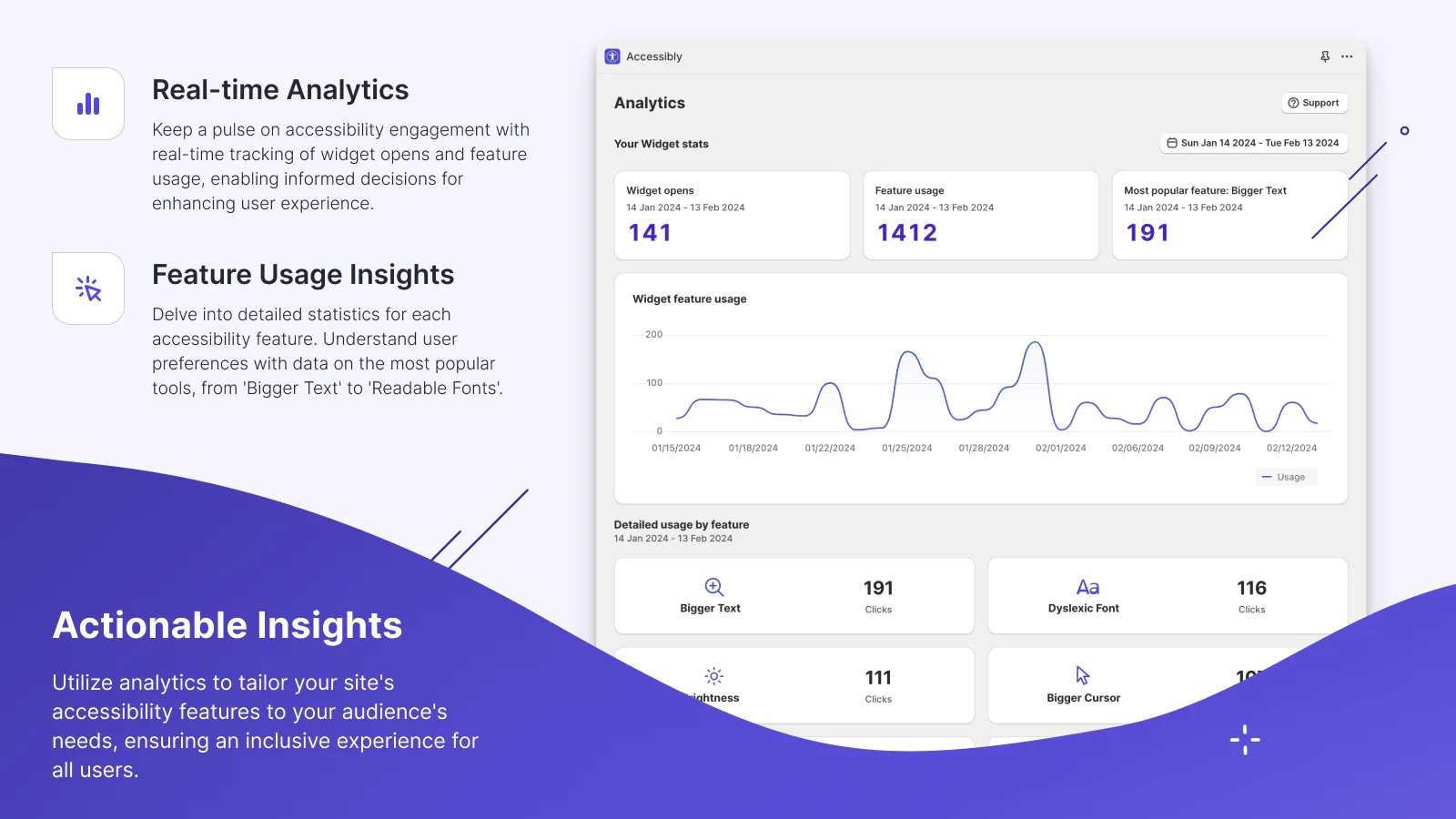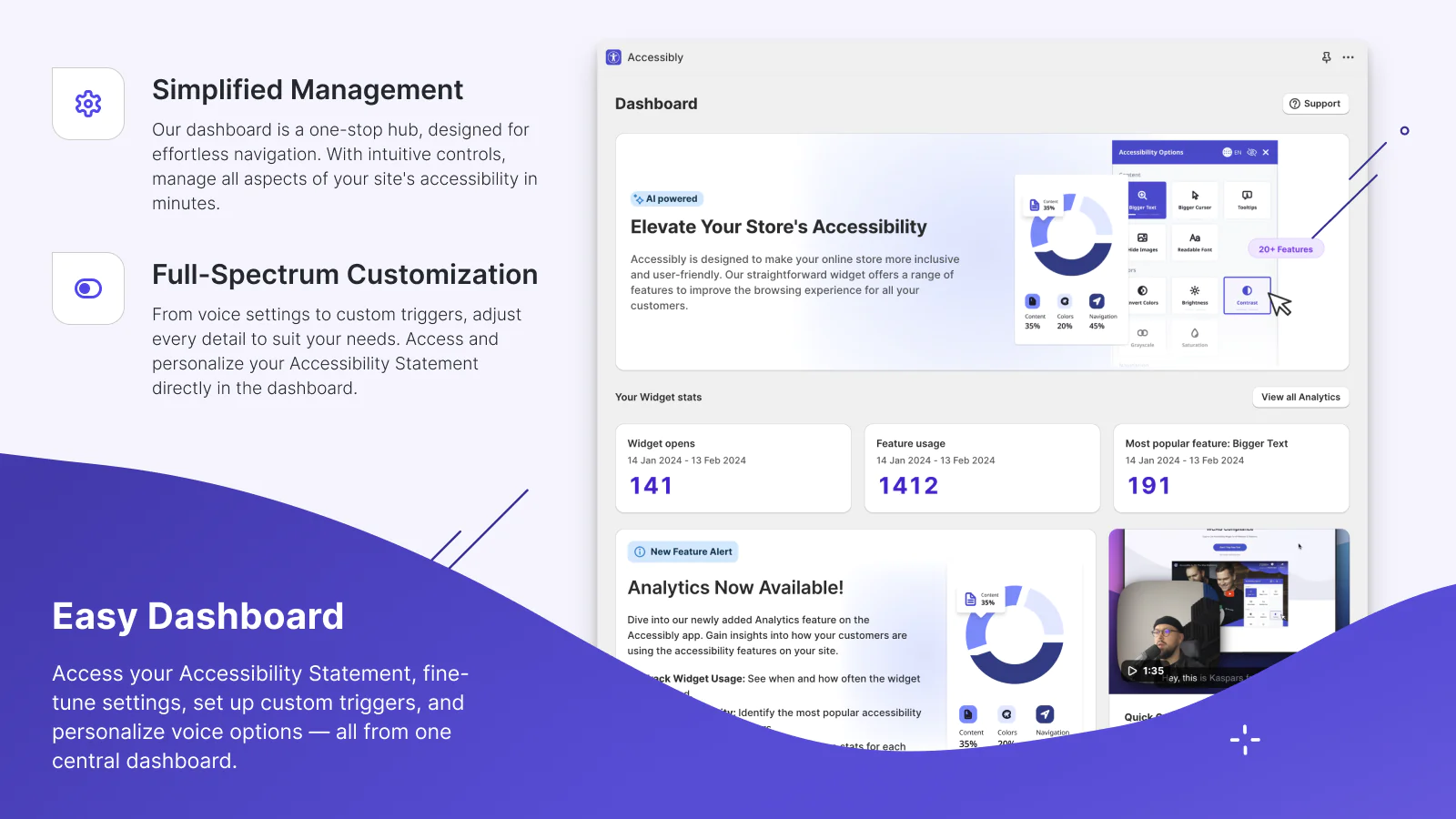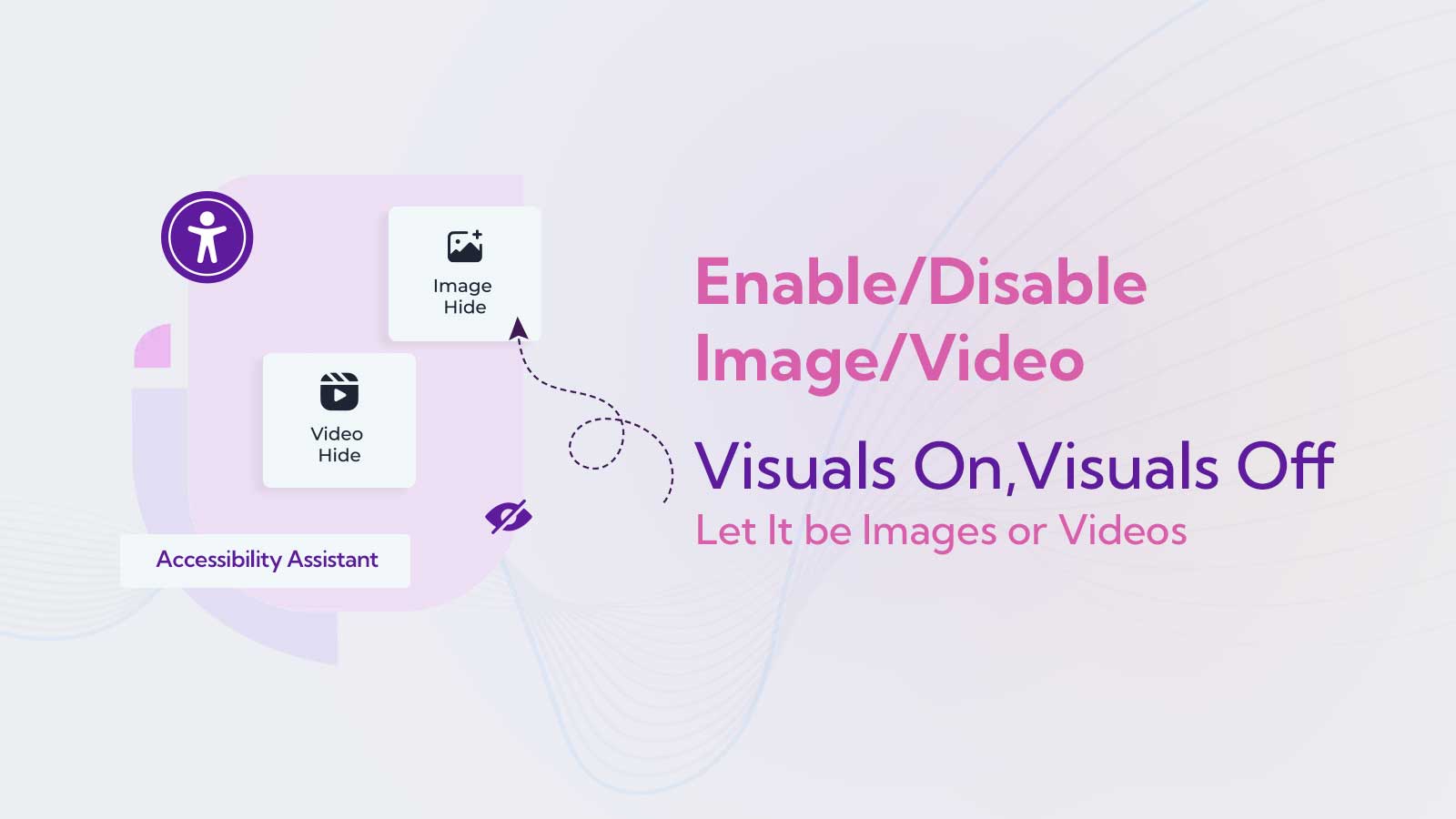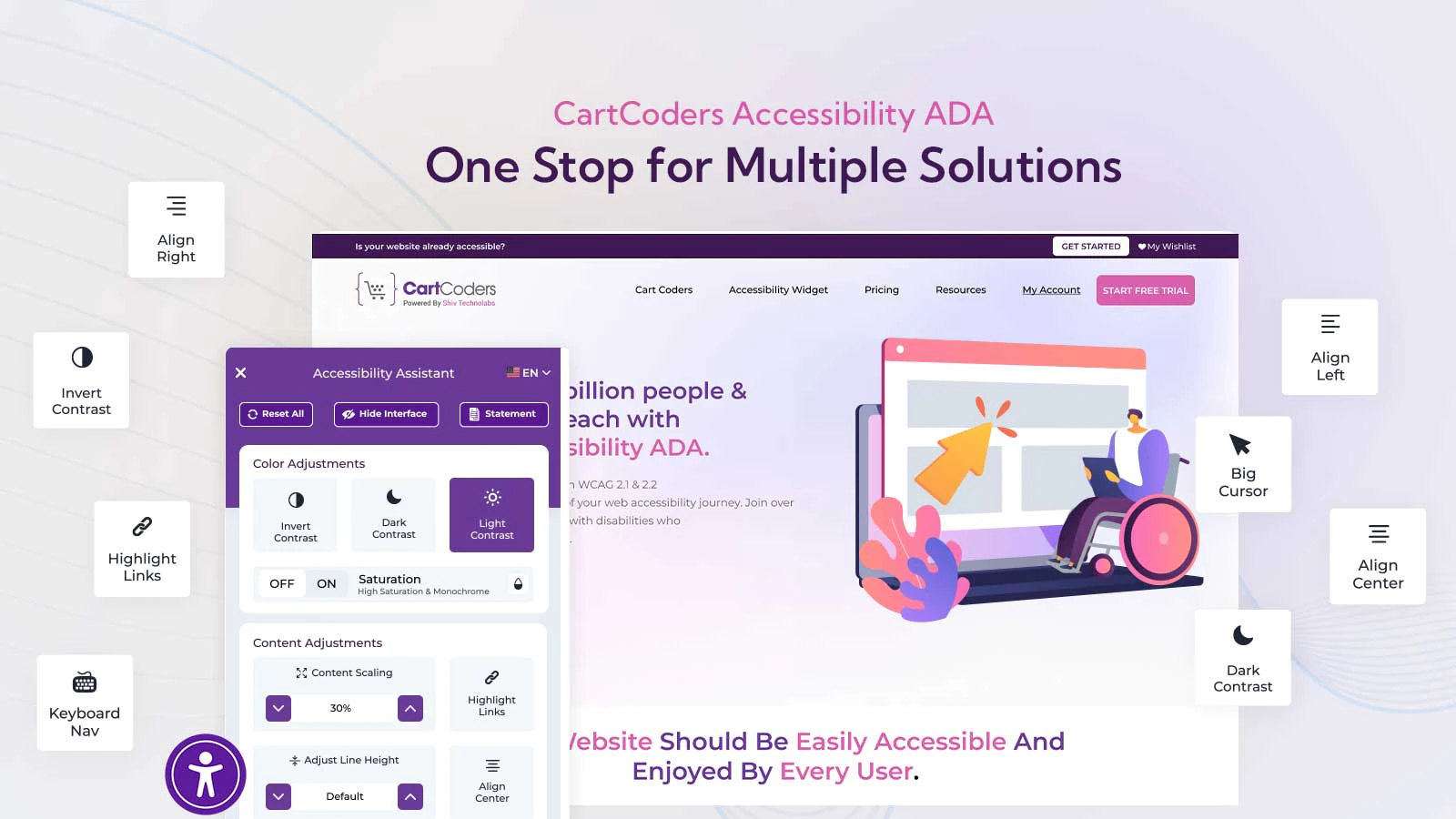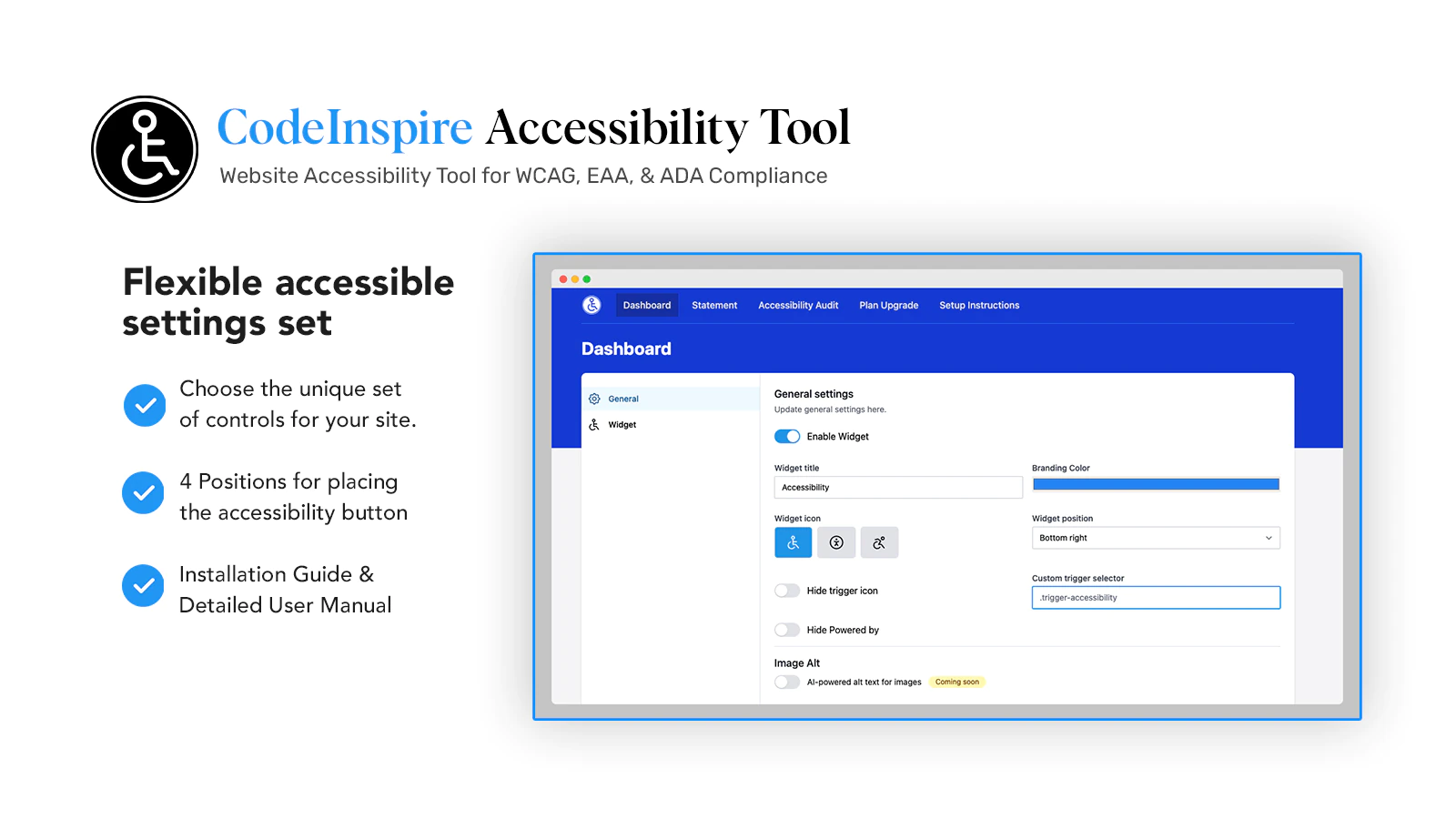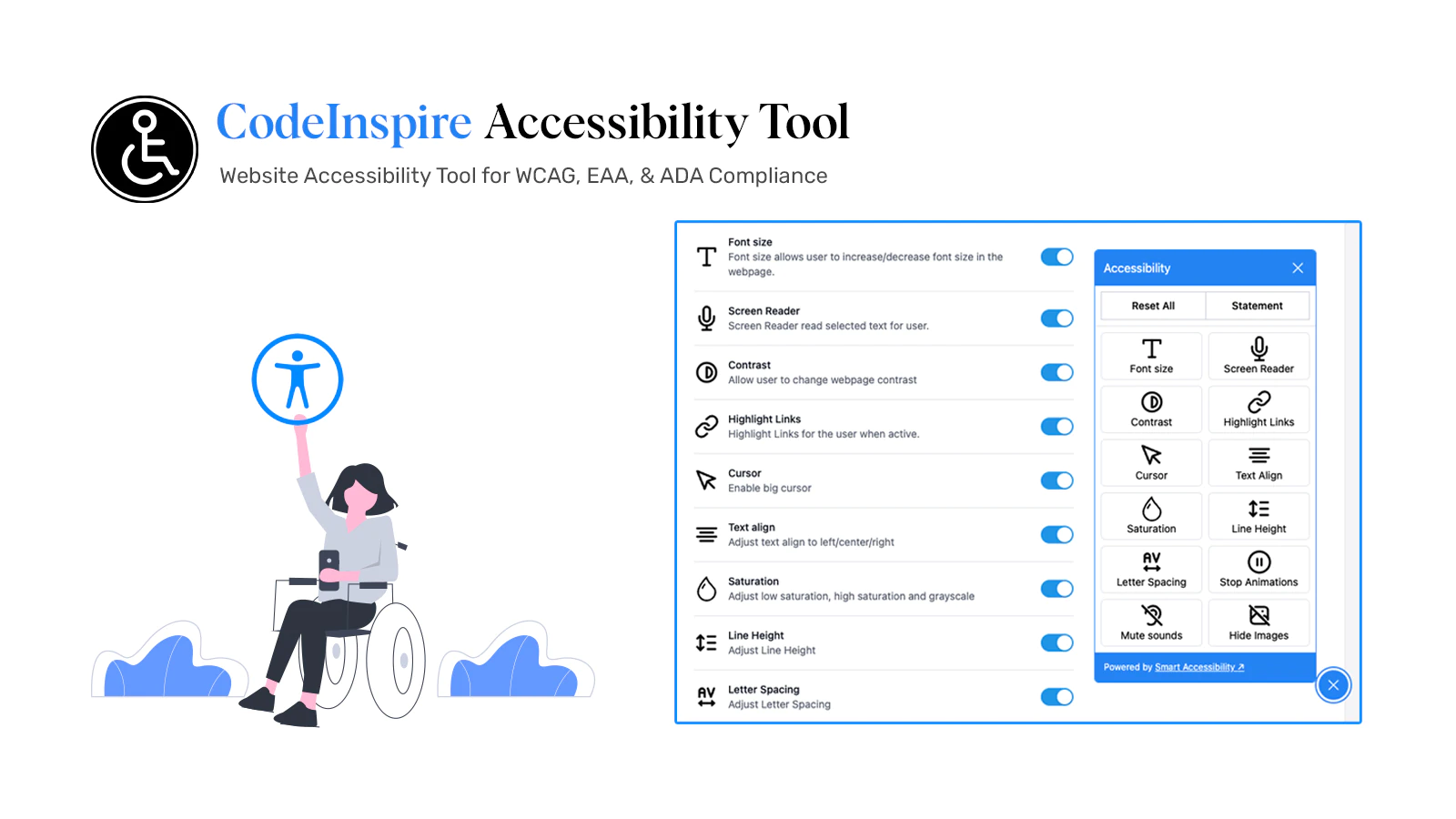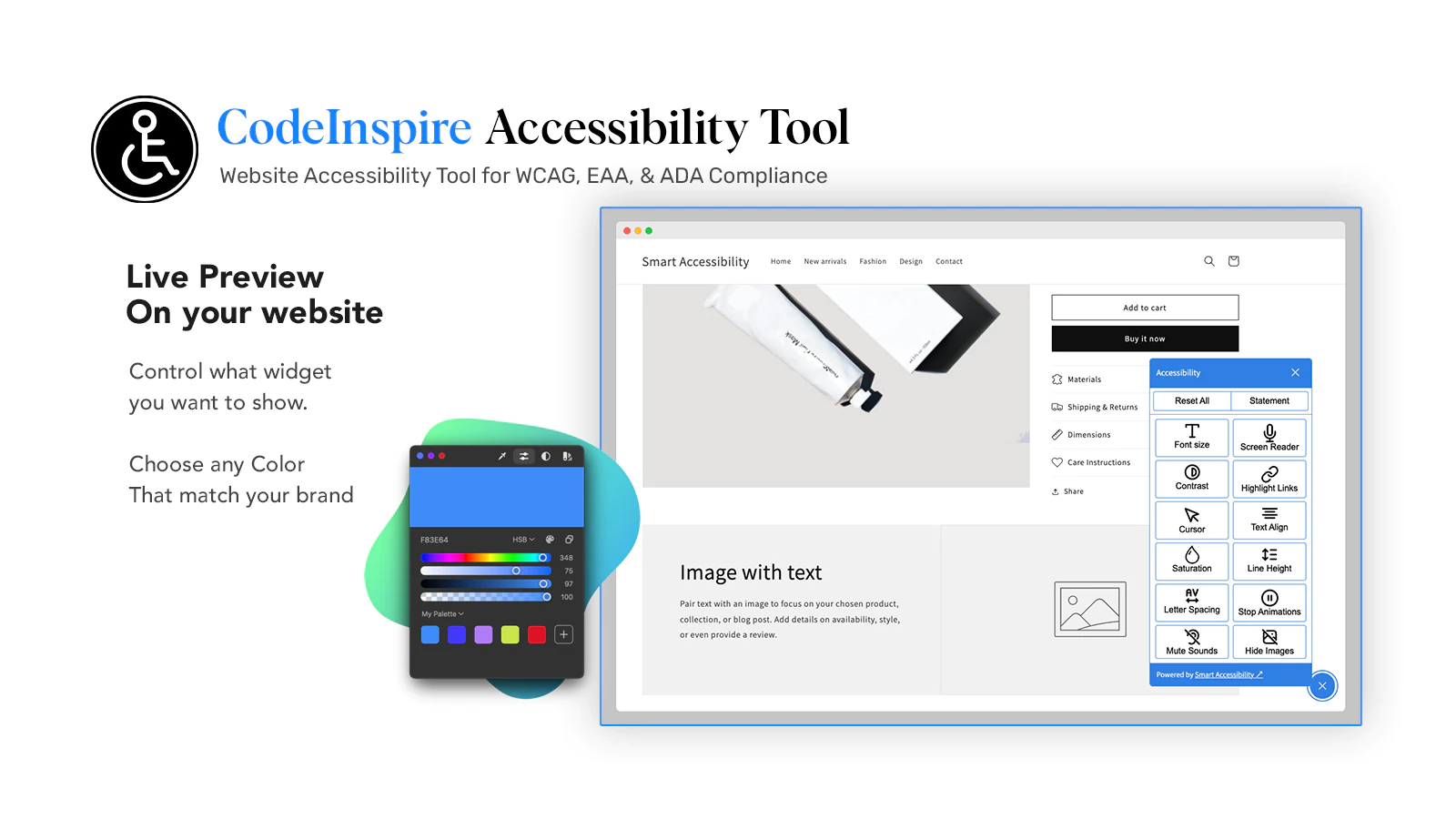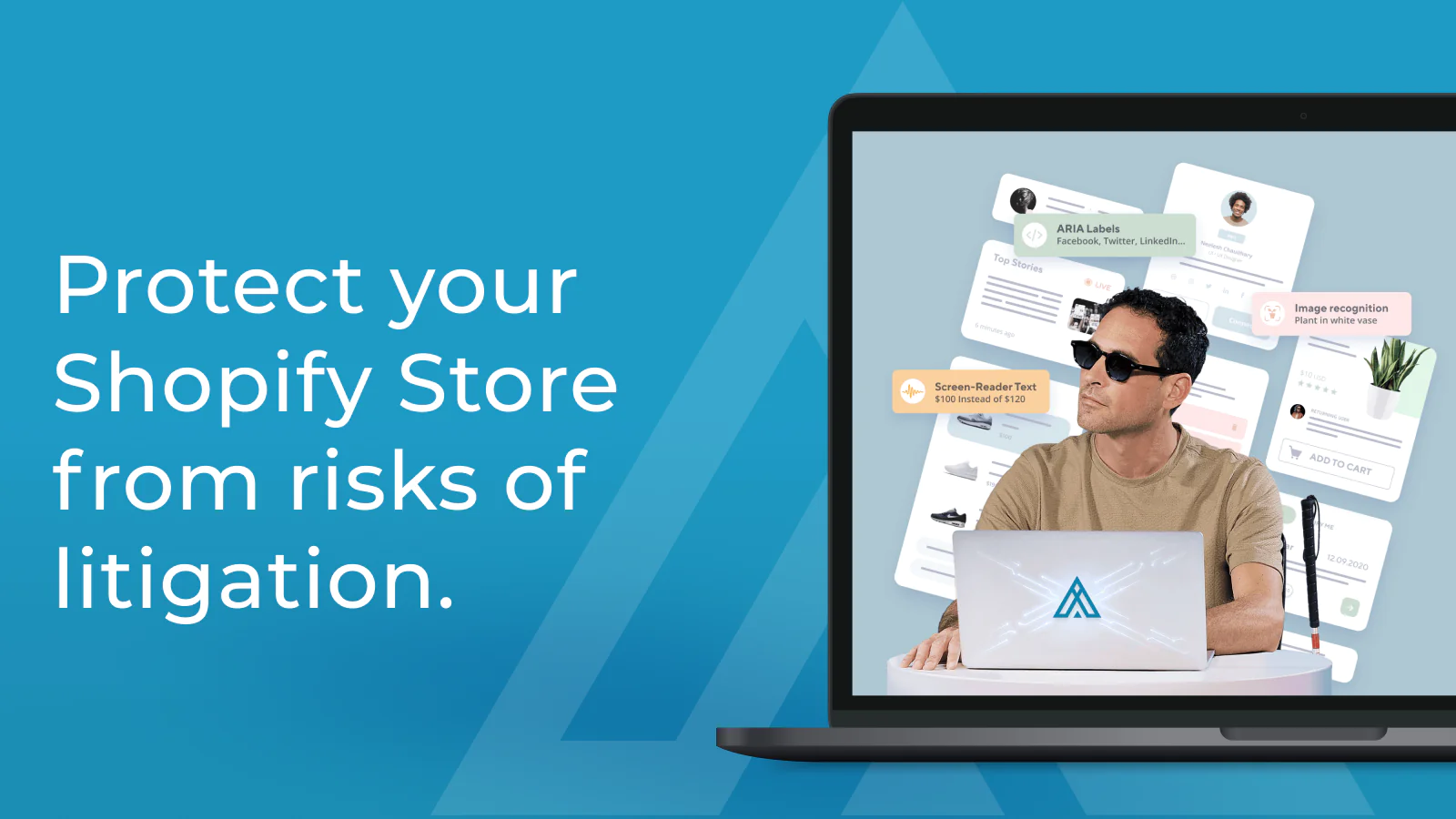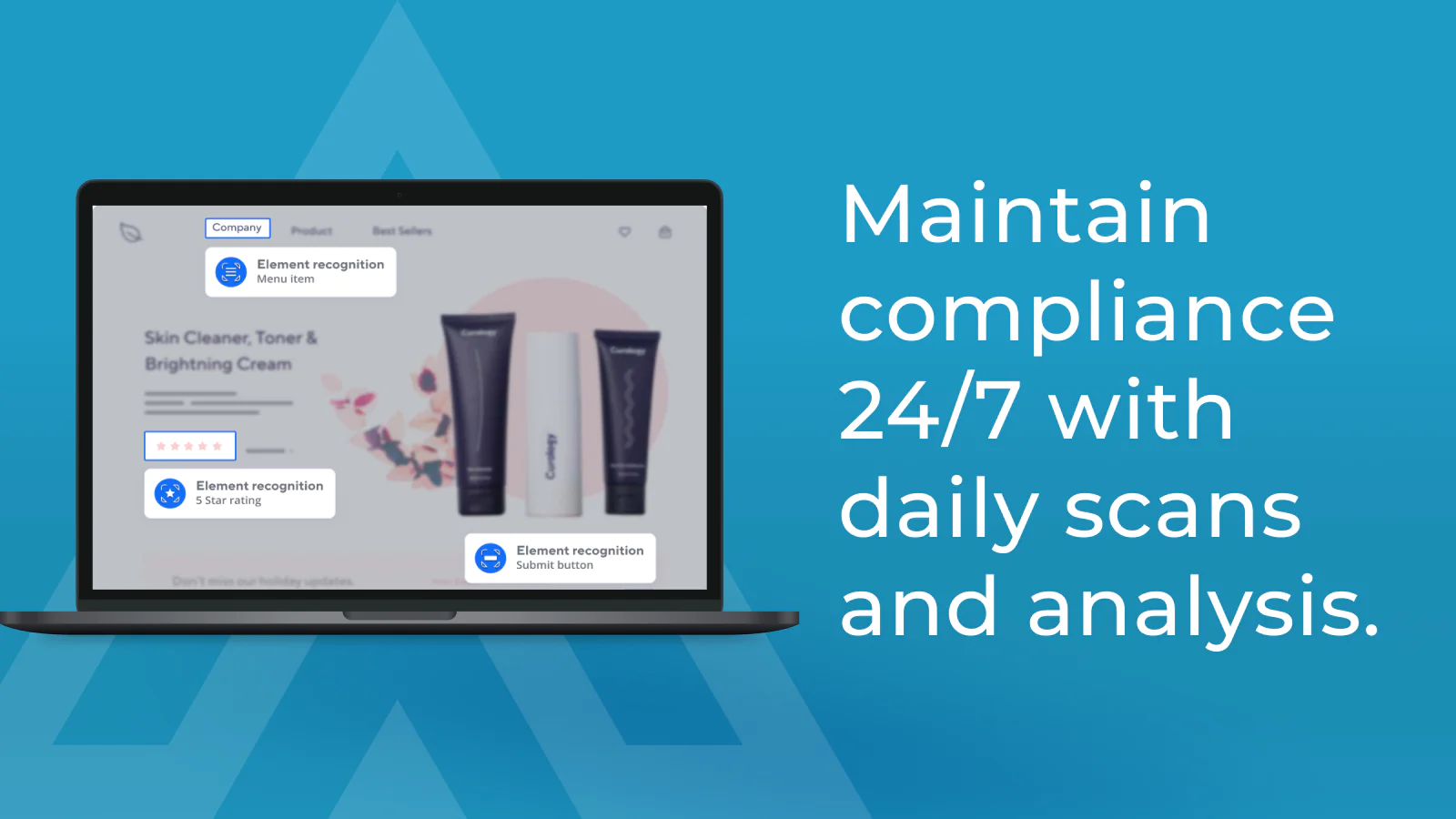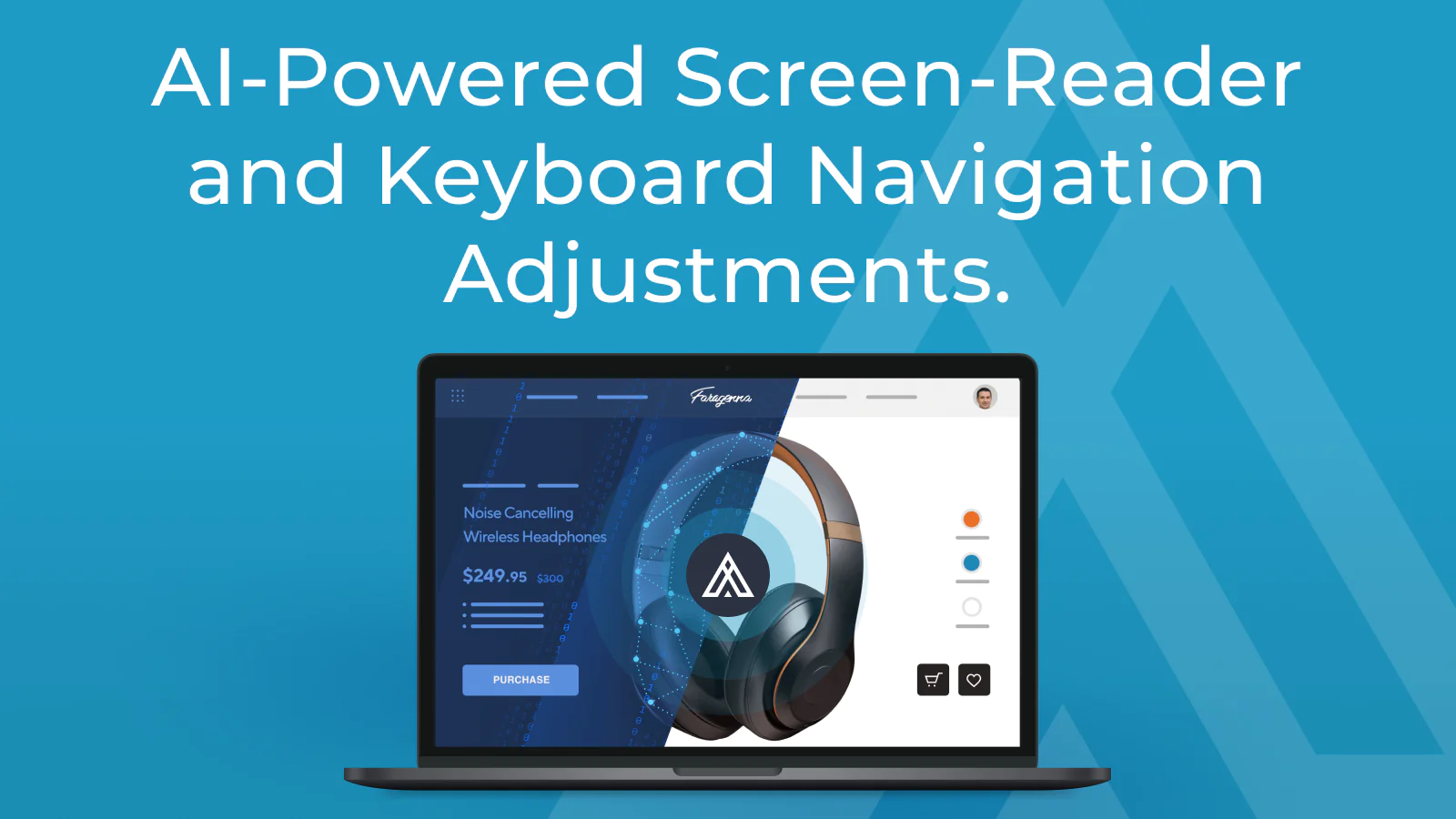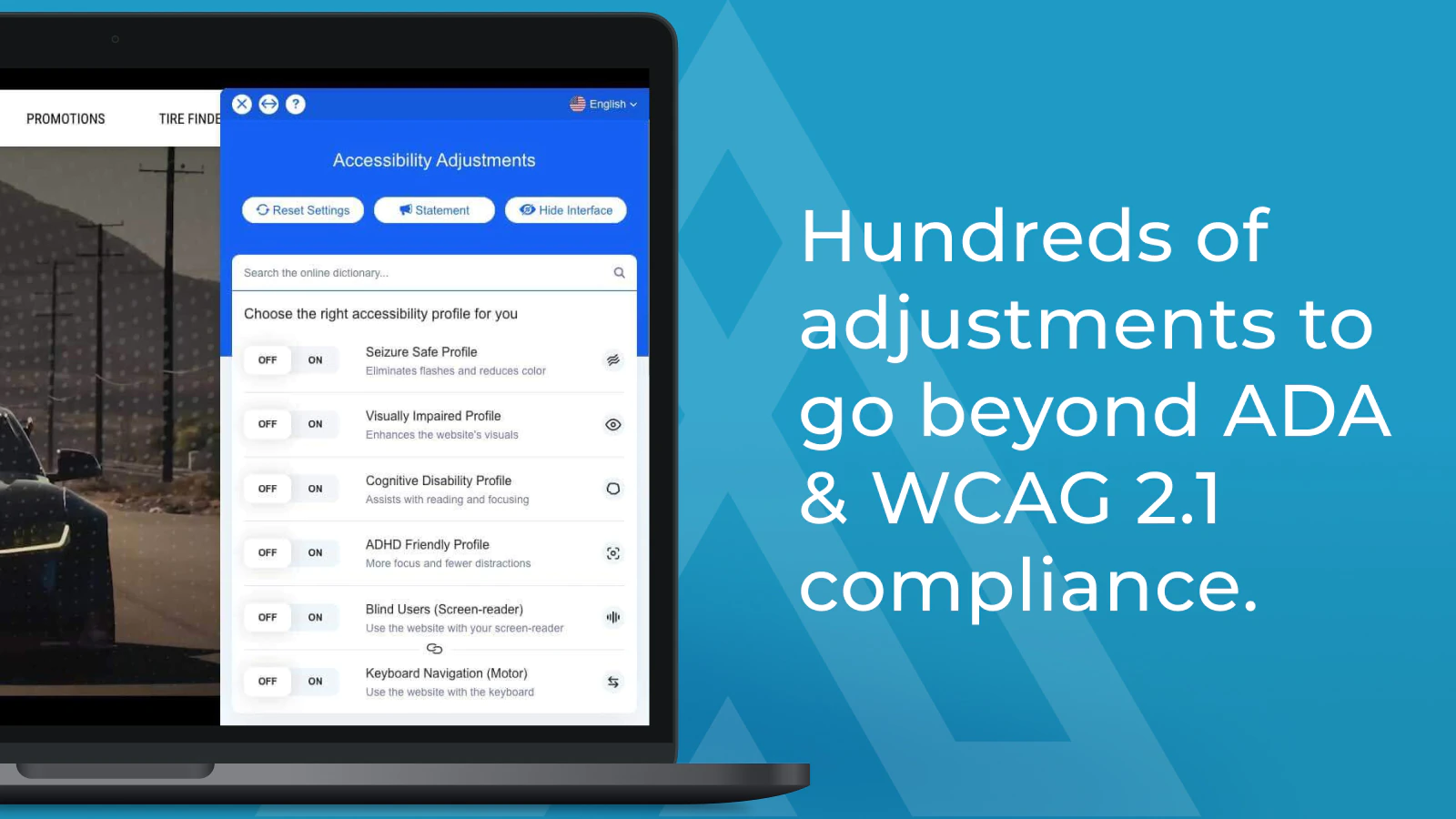Top 5 Best Shopify Accessibility Apps [January, 2025]
This guide helps ecommerce store owners to compare and find the best accessibility apps for Shopify. Accessibility apps are popular for ecommerce businesses that want to make their stores easier for people with disabilities to access and use. However, with the variety of Shopify apps for accessibility, it can be challenging to find the ideal app for store owners’ individual needs.
To help ecommerce store owners make the right choice, the attributes of available Shopify apps have been assessed considering: features, price, free trial availability, app store rating and free app options.
This guide compares five companies for merchants to review and find the optimal accessibility app for their needs. To help them make an informed decision, a quick comparison table of the best accessibility Shopify apps is shared below, followed by in-depth reviews and frequently asked questions.


Free Guide: How To Find A Profitable Product To Sell Online
Excited about starting a business, but not sure where to start? This free, comprehensive guide will teach you how to find great, newly trending products with high sales potential.
Quick comparison of the best Shopify accessibility apps
| # | App Name | Developer Name | Pricing | Rating | Free Trial | Image | Action |
|---|---|---|---|---|---|---|---|
| 1 | Accessibly | On The Map Marketing | $5/month | 4.9/5 ⭐️ | yes | 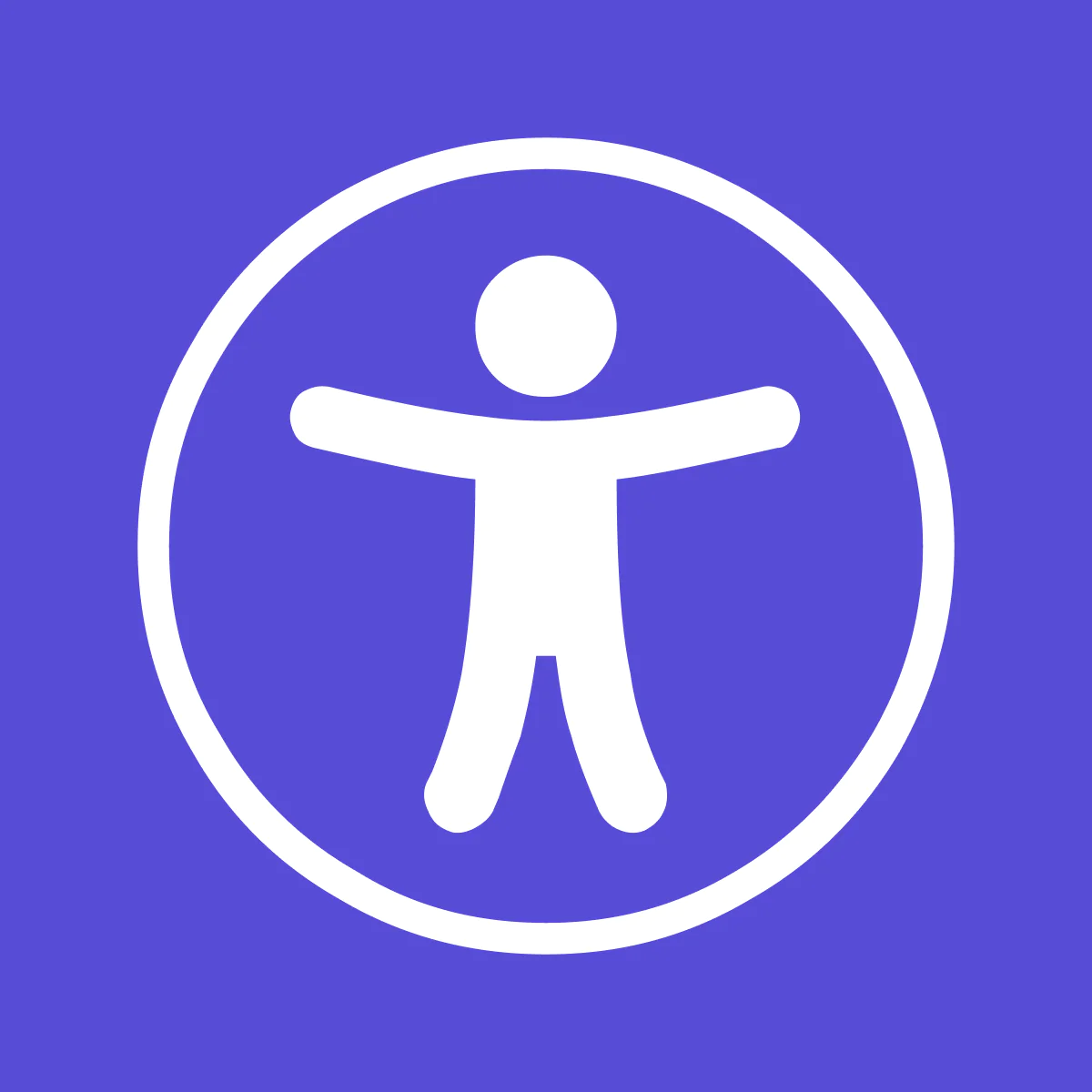 |
Get app |
| 2 | Accessibility ADA CartCoders | Cart Coders | $5/month | 4.7/5 ⭐️ | yes | 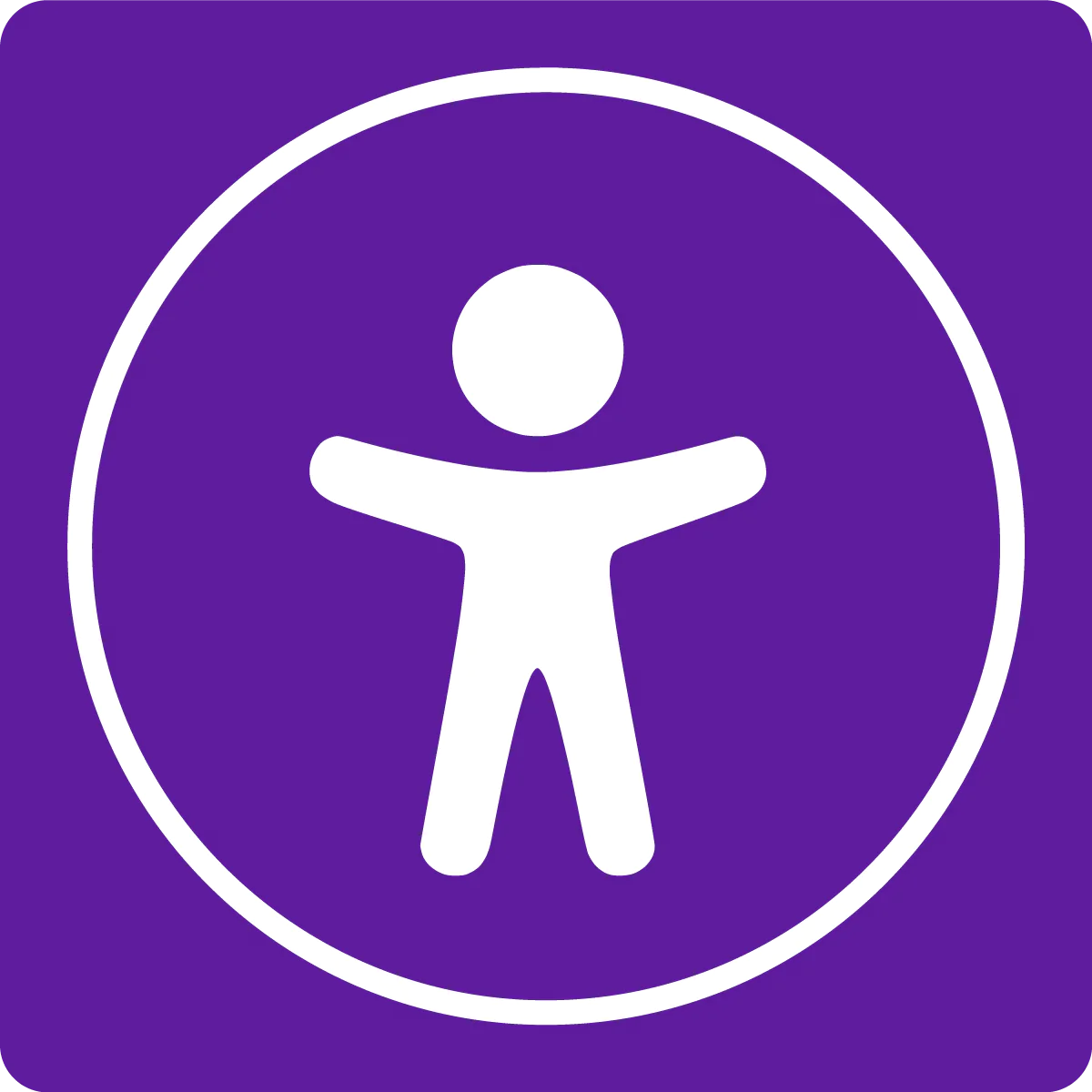 |
Get app |
| 3 | CodeInspire Accessibility Tool | CodeInspire.io | $7.20/month | 4.8/5 ⭐️ | no |  |
Get app |
| 4 | Accessibility Spark ADA & WCAG | Trident AB | $99.99/month | 5/5 ⭐️ | yes | 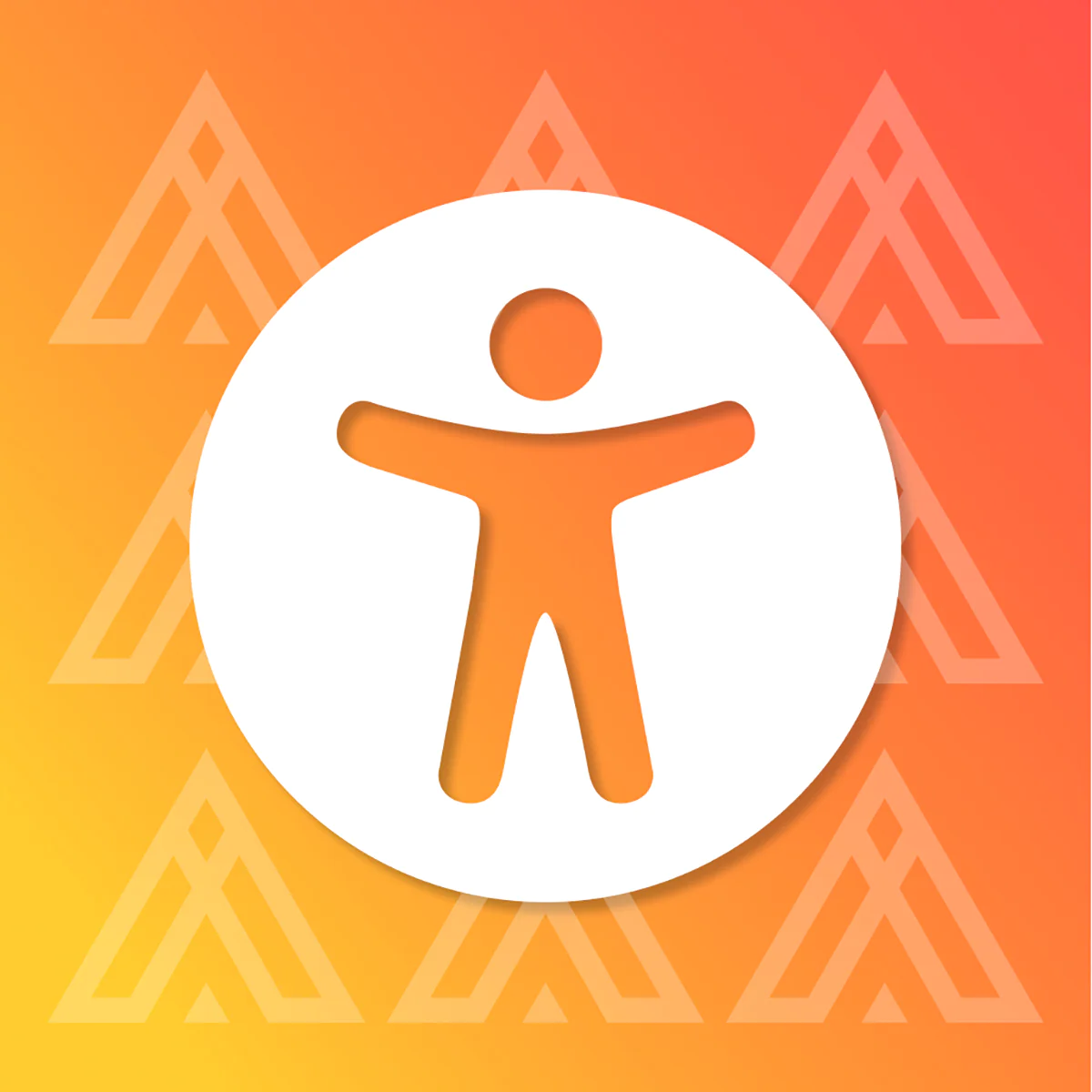 |
Get app |
| 5 | Accessibility Enabler AW | HikeOrders | $12/month | 4.8/5 ⭐️ | yes |  |
Get app |
Top Shopify accessibility apps reviewed
Table of contents:
How to Find The Best Accessibility Shopify App?
These five Accessibility apps for Shopify are ranked based on the following criteria:
- Features
- Price
- Rating on the Shopify app store
- Free trial availability
- Free app options
- Compatibility with other top apps
- Number of apps the app provider operates
- Pros and cons
- Built for Shopify badge
- Reviews and assessment by AcquireConvert
What are Shopify Accessibility apps?
Shopify Accessibility Apps are designed to make online stores more accessible and inclusive, especially for users with disabilities. These tools help merchants ensure their websites comply with important standards such as the Americans with Disabilities Act (ADA) and the Web Content Accessibility Guidelines (WCAG). By doing so, merchants can enhance the user experience for a broader audience, including those with visual impairments, motor difficulties, auditory disabilities, and other accessibility needs.
Here’s how these apps can help you:
- Improve Site Usability: They offer features like text-to-speech, keyboard navigation enhancements, and color contrast adjustments, making your site easier to navigate for everyone.
- Expand Customer Base: By removing barriers, you open your store to millions of potential customers who might have been unable to access your site otherwise.
- Enhance SEO and Traffic: Many accessibility adjustments, such as alternative text for images and proper use of headings, can also improve your site’s SEO, potentially increasing traffic.
- Compliance with Legal Standards: These apps help you avoid legal issues by ensuring your site meets ADA, WCAG, and other relevant accessibility standards, protecting your business from potential lawsuits.
- Social Responsibility: Demonstrating a commitment to accessibility shows that you value all customers equally, enhancing your brand’s reputation and customer loyalty.
In essence, Shopify Accessibility Apps not only aid in compliance with legal requirements but also contribute to creating a more inclusive digital environment. This inclusivity can lead to increased customer satisfaction, broader market reach, and potentially higher sales, benefiting your business significantly.
What is the ADA?
The Americans with Disabilities Act (ADA) is a federal civil rights law that prohibits discrimination against individuals with disabilities in all areas of public life, including jobs, schools, transportation, and all public and private places open to the general public. The purpose of the ADA is to ensure that people with disabilities have the same rights and opportunities as everyone else. It extends protection to individuals who have physical or mental impairments that substantially limit major life activities, those who have a history or record of such impairments, and individuals who are perceived by others as having such impairments.
In the context of web accessibility, the ADA mandates that state and local governments (Title II) and businesses open to the public (Title III) must provide individuals with disabilities equal access to their programs, services, and activities, which includes online content and functionality. This means websites, online stores, and other digital content must be accessible to people with a variety of disabilities, including visual, auditory, physical, speech, cognitive, and neurological disabilities. Making web content accessible can involve a variety of adjustments, such as providing text alternatives for non-text content, ensuring website navigation is possible through keyboard only, making sure videos have captions, and more.
Adhering to ADA standards in the digital realm not only avoids potential legal issues but also expands the customer base and improves overall user experience for all visitors. Given the rise in online services and e-commerce, ensuring web accessibility has become increasingly important for businesses, including Shopify store owners. By making their sites ADA compliant, they are not only following the law but also demonstrating social responsibility and inclusivity, potentially reaching a wider audience.
What is the WCAG?
WCAG, or Web Content Accessibility Guidelines, is a set of standards developed by the World Wide Web Consortium (W3C) aimed at making the internet more accessible to people with disabilities. It outlines how to make web content accessible under four principles: Perceivable, Operable, Understandable, and Robust (POUR).
- Perceivable means users must be able to perceive the information being presented.
- Operable ensures users can navigate and use the website.
- Understandable requires information and operation of the website to be understandable.
- Robust demands content to be interpreted reliably by a wide variety of user agents, including assistive technologies.
WCAG has three versions, with 2.0 and 2.1 being the most commonly referenced. Each version includes guidelines organized by the POUR principles and testable success criteria classified into three levels of conformance: A (basic), AA (mid-level), and AAA (highest). Meeting these guidelines helps make web content more accessible to a wider audience, including those with disabilities, and complies with legal and policy requirements for digital accessibility across the globe.
Conclusion: Best Shopify Accessibility Apps
It requires time and effort to compare and evaluate features of the various different Accessibility Shopify apps to find the ideal option.
Shopify store owners must evaluate relevant information to make the optimal choice for their needs.
This guide does the challenging work for merchants by comparing and evaluating the top choices for different Accessibility Shopify apps. The results of our analysis of the best Accessibility Shopify apps are listed below:

